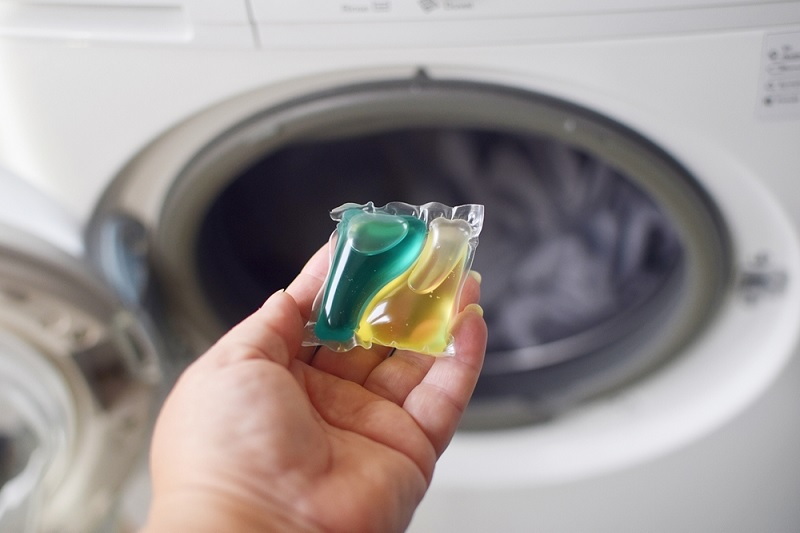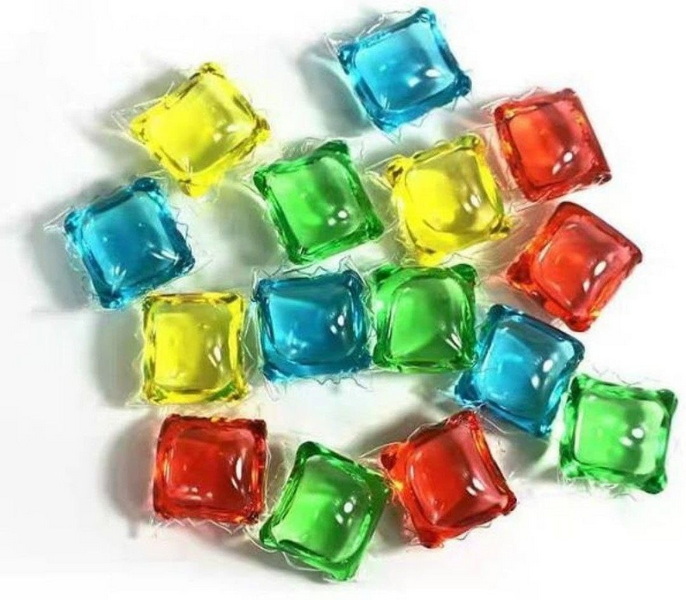Dongguan UFine Daily Chemical Co.,Ltd.
- All
- Product Name
- Product Keyword
- Product Model
- Product Summary
- Product Description
- Multi Field Search
Views: 222 Author: Tomorrow Publish Time: 10-27-2025 Origin: Site











Content Menu
● Choose the Right Pods for Your Load
● Prepare Your Laundry Room and Load
● Detergent Amount and Temperature Considerations
● Environmental and Safety Considerations
● Troubleshooting Common Issues
● Environmental Stewardship and Efficiency
● Fashion and Fabric Care Insights
● Future Trends in Pod Detergents
● FAQ
>> 1. What should I do if a pod doesn't fully dissolve in my wash?
>> 2. Can I use pods in both high-efficiency and standard washing machines?
>> 3. Are there pods suited for delicate fabrics like silk or wool?
>> 4. How should I store laundry pods to ensure safety and effectiveness?
>> 5. Is it better to use cold or warm water with pods for most loads?
Doing laundry with detergent pods offers a convenient, pre-measured solution for clean clothes. This guide covers practical steps, best practices, and common pitfalls to help you get the most from your laundry pods while protecting fabrics and the environment.

- Pods come in various formulations, including standard detergent, color-safe formulas, high-efficiency (HE) detergents, and specialty pods for whitening, stain removal, or fabric care.
- Always check your washing machine's manual to confirm compatible detergent types and pod usage.
- For delicate fabrics or specialized washes (e.g., wool, silk), select pods designed for those materials if available.
- Sort clothes by color, fabric weight, and washing requirements. Separate whites from colors and consider towels and bedding as a separate heavy-duty load.
- Empty pockets and close zippers to prevent snagging or premature wear.
- Do not overload the washing machine. A full drum should still allow your hands to move freely inside.
- Place the pod directly in the drum before adding clothes, not in the detergent dispenser unless the manufacturer specifies otherwise.
- For front-loading machines, ensure the pod is placed in contact with clothing and not blocked by a heavy item that could prevent dissolution.
- For top-loading machines, place the pod in the drum first, then add laundry. Do not place pods in the dispenser cup.
- Do not unwrap or crush pods; they are designed to dissolve during the wash cycle.
- Pods provide a pre-measured dose, but adjust only for extraordinary soiling or large loads as per manufacturer guidance.
- Water temperature affects dye transfer and stain removal. Cold water is energy-efficient and suitable for most colors; warm water can help with certain stains and heavily soiled items. Use hot water only when necessary and compatible with fabrics.
- Use the appropriate cycle for the load type: normal for everyday clothing, delicate for light fabrics, and heavy-duty for towels and bedding.
- HE machines require low-sudsing pods and shorter wash cycles to prevent residue and ensure efficient cleaning.
- If your machine permits, enable features such as extra rinse for better residue removal, especially when washing with heavily soiled items or in hard water areas.
- If you notice soapy residue on clothing after washing, verify pod type and dosage, and consider using an extra rinse cycle.
- For persistent odors, run an occasional hot rinse if fabrics tolerate it, or use a washer cleaner as recommended by the machine's manufacturer.
- Hard water can reduce cleaning efficiency. Consider water softening or using pods formulated for hard water if available.

- Dark colors: Use color-safe pods and cold water to minimize fading. Turn garments inside out for extra protection.
- White fabrics: Use whitening or brightening pods designed for white clothes, but avoid chlorine-containing products that can weaken fabrics over time.
- Stain treatment: Treat stains promptly with a targeted pre-wash product if the pod's formulation doesn't specifically address the stain type.
- Pods are designed for convenience but still require careful handling. Keep pods out of reach of children and pets.
- Store pods in a cool, dry place away from sunlight, as heat can degrade the packaging and some formulations.
- Consider eco-friendly pods with concentrated formulas to minimize plastic waste and water usage.
- Pods not dissolving completely: Check load size, water temperature, and machine efficiency. Ensure the pod is not trapped under heavy items and that water can circulate properly.
- Faint cleaning results: Verify the load isn't overloaded, choose the appropriate cycle, and consider adjusting temperature or using a pre-wash for heavily soiled items.
- Residue on clothes: Reduce load size, use an extra rinse, and ensure the pod is placed correctly in the drum.
- Regularly clean the washing machine's lint filter and dispenser if applicable.
- Run an occasional maintenance cycle with an appropriate cleaning product to prevent residue buildup.
- Inspect hoses and seals for wear and address leaks promptly to maintain appliance efficiency.
- Keep pods sealed and out of reach of children. Do not allow pets or children to handle pods without supervision.
- If a pod is ingested or comes into contact with eyes or skin, follow first aid instructions on the packaging and seek medical help if necessary.
- Choose concentrated pods to minimize packaging waste. Look for labeling that indicates reduced plastic usage and recyclable packaging.
- Combine pods with proper laundry habits to maximize efficiency: full but not overloaded loads, correct water temperature, and appropriate cycle selection.
- Consider pairing pods with energy-saving modes on your washer and using the machine's eco-friendly settings when available.
- For activewear, look for pods designed to maintain elasticity and moisture-wicking properties without harsh residues.
- Denim and sturdy fabrics benefit from slightly warmer washes, but always verify care labels to avoid shrinkage or color fading.
- Laundry boosters like oxygen-based whiteners can work in tandem with pods for stubborn stains, but test on inconspicuous areas first.
- Teach children the importance of following washing instructions and keeping pods out of reach.
- Consider a dedicated storage solution high up or in a locked cabinet to prevent curious handling by young children or pets.
- Replace damaged or leaking pods immediately to prevent exposure.
- Formulations are increasingly focusing on skin-friendliness and hypoallergenic properties, especially for sensitive households.
- Some pods are now designed to be more efficient in cold-water washes, reducing energy use even further.
- Packaging innovations aim to reduce plastic and improve recyclability, including dissolvable packaging and refill options.
Detergent pods offer a straightforward approach to laundry, combining pre-measured dosing with simplified handling. By selecting the right pod for your load, following proper loading and washing practices, and observing safety and environmental considerations, you can achieve clean, fresh clothes with less guesswork. Regular maintenance of your washing machine and mindful storage of pods will help sustain performance and safety over time.

If a pod doesn't fully dissolve, check the load size, water temperature, and machine circulation. Ensure the pod isn't trapped under heavy items and consider an extra rinse or a secondary wash cycle if needed.
Yes, but follow the pod's label instructions. Use HE-safe pods for HE machines to minimize suds and residue; if using non-HE pods, adjust according to manufacturer guidance.
Yes, select pods labeled for delicate or gentle fabrics and wash on the appropriate low-temperature, gentle cycle as recommended on the care label.
Store in a cool, dry place, kept out of reach of children and pets, in the original sealed container or a childproof dispenser to prevent accidental exposure or ingestion.
Cold water is suitable for most loads and saves energy. Warm water can help with certain stains or heavily soiled items, but avoid hot water unless fabrics tolerate it and care labels permit.